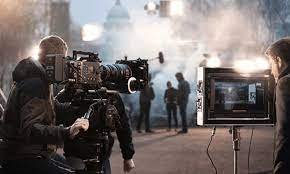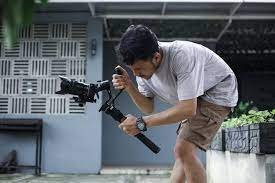Cinematographer/Videographer

In the realm of visual storytelling, the role of a cinematographer or videographer is indispensable. These skilled professionals are the architects behind the mesmerizing visuals that captivate audiences on screens big and small. From setting the mood with lighting to framing shots that evoke emotion, cinematographers and videographers play a crucial role in bringing narratives to life. In this article, we’ll delve into the intricacies of this multifaceted craft, exploring the responsibilities, skills, and creative process of those who master the art of visual storytelling.
Understanding the Role
At its core, the role of a cinematographer or videographer revolves around capturing images that effectively convey the story being told. Whether it’s a feature film, documentary, commercial, or music video, these professionals work closely with directors and producers to translate their vision into compelling visuals.
Cinematographers primarily work in the realm of film, whereas videographers tend to focus on video production for various purposes such as corporate videos, events, weddings, and online content. However, the line between the two roles can sometimes blur, especially in today’s digital age where technology allows for crossover between different mediums.
Responsibilities
The responsibilities of a cinematographer or videographer can vary depending on the project, but some core tasks remain consistent across the board:
- Visual Planning: Collaborating with directors to understand the creative vision and conceptualize the visual style of the project. This involves storyboarding, shot listing, and location scouting to ensure that every frame serves the narrative.
- Camera Operation: Operating cameras and other equipment to capture footage according to the established plan. This includes selecting lenses, adjusting camera settings, and framing shots with precision.
- Lighting Design: Designing and implementing lighting setups to create the desired mood and atmosphere for each scene. This may involve using natural light, artificial lighting fixtures, or a combination of both to achieve the desired effect.
- Composition: Carefully composing shots to enhance storytelling and evoke emotion. This includes considerations such as framing, camera angles, and camera movement to engage the audience visually.
- Post-Production: Collaborating with editors and colorists to ensure that the captured footage is edited and graded to perfection. This may involve color correction, visual effects, and other enhancements to achieve the desired look and feel.
Essential Skills
To excel in the role of a cinematographer or videographer, one must possess a diverse set of technical skills and artistic sensibilities:
- Technical Proficiency: A thorough understanding of camera equipment, lenses, lighting techniques, and post-production software is essential. This includes proficiency in operating various types of cameras, from traditional film cameras to digital cinema cameras and DSLRs.
- Creative Vision: The ability to translate abstract concepts into visually compelling imagery is crucial. Cinematographers and videographers must possess a keen eye for composition, color, and aesthetics to effectively communicate the intended message.
- Collaboration: Strong communication and collaboration skills are essential for working effectively with directors, producers, and other members of the production team. The ability to articulate ideas, provide feedback, and adapt to changing circumstances is key to successful collaboration.
- Problem-Solving: In the fast-paced world of film and video production, unexpected challenges often arise. Cinematographers and videographers must be adept at thinking on their feet and finding creative solutions to overcome obstacles while staying true to the project’s vision.
- Attention to Detail: The devil is in the details when it comes to cinematography. From meticulously planning camera movements to ensuring proper exposure and focus, attention to detail is paramount in achieving professional-quality results.
The Creative Process
The creative process of a cinematographer or videographer typically unfolds in several stages:
- Pre-Production: This phase involves thorough planning and preparation before the actual shooting begins. It includes script analysis, visual development, location scouting, casting, and technical rehearsals to ensure that all aspects of the production are well-organized.
- Production: During this phase, the cinematographer or videographer works on set to capture the footage according to the established plan. This involves coordinating with the director, actors, and crew to execute shots effectively while maintaining creative integrity.
- Post-Production: Once the footage is captured, the post-production process begins. This includes editing, color grading, sound design, and visual effects to polish the raw footage into a finished product. Collaboration with editors and other post-production professionals is key to achieving the desired result.
- Feedback and Revision: Throughout the creative process, feedback from the director, producers, and other stakeholders is solicited and incorporated to refine the final product. This iterative process ensures that the visual storytelling aligns with the project’s overall vision and objectives.
Evolving Technologies
Advancements in technology have significantly impacted the field of cinematography and videography, opening up new possibilities for creative expression. From digital cameras with higher resolution and dynamic range to innovative lighting fixtures and post-production software, filmmakers have access to an unprecedented array of tools and techniques.
One notable development is the rise of digital cinematography, which has revolutionized the way films are made. Digital cameras offer greater flexibility, allowing cinematographers to experiment with different shooting styles and techniques without the limitations of traditional film stock.
Similarly, the advent of high-definition and 4K resolution has raised the bar for visual quality, pushing cinematographers and videographers to deliver ever-more stunning imagery. This trend is further fueled by the growing demand for immersive viewing experiences in theaters, on streaming platforms, and beyond.

Conclusion
In the ever-evolving landscape of film and video production, the role of a cinematographer or videographer remains as vital as ever. These skilled professionals serve as the visual architects behind some of the most memorable moments in cinema and television, bringing stories to life through the power of imagery.
Mastering the craft of cinematography or videography requires a combination of technical expertise, artistic vision, and collaborative spirit. From planning and shooting to editing and post-production, cinematographers and videographers play a pivotal role in shaping the visual language of storytelling.
As technology continues to advance and storytelling evolves, the role of cinematographers and videographers will undoubtedly evolve as well. Yet, at its core, the essence of their craft remains unchanged: to capture the imagination and ignite the emotions of audiences around the world.
